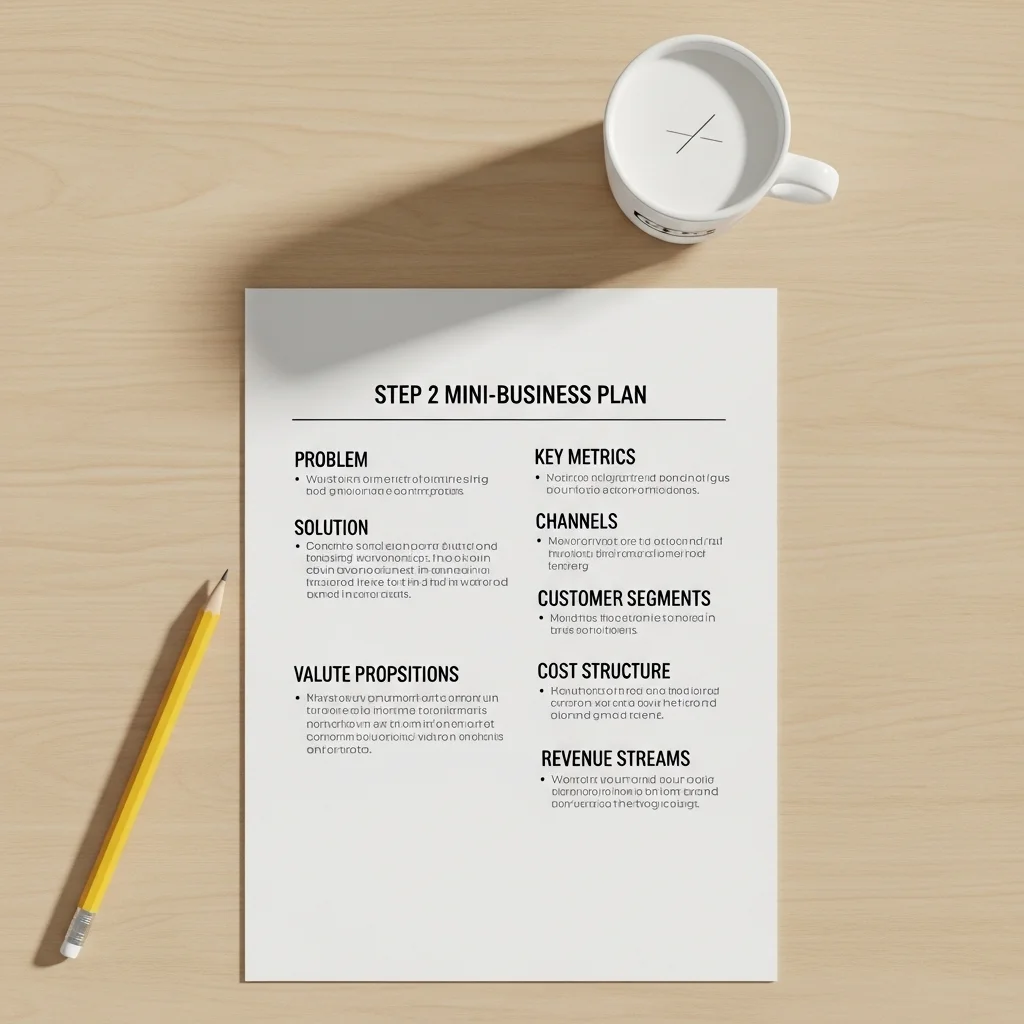Dare now, fail fast, learn faster
Four essential building blocks for your first entrepreneurial year
Automate
Smart tools eliminate repetitive tasks so you can focus on growth, not fiddling with Excel. Think of free invoicing apps or no-code prototypes that let you launch version one overnight.
Validate
Real input comes from classmates, lecturers and the university hub. A short landing-page test with 100 clicks often tells you more than six months of market research.
Fund
Combine sustainable savings, a Rabo Starter Advantage loan or the local voucher scheme. Campus-based crowd funds can also provide surprisingly quick capital.
Scale
Integrate your study projects with your start-up. That way you count hours twice for both the hour criterion and study credits—efficient, right?
Starting your own business can feel like learning to ride a bike up a hill: nerve-racking, awkward, but so liberating once you gain momentum..
Summary

From idea to first invoice
Every successful student-entrepreneur tackles three mental bends: sharpening the vision, fixing the rules and building traction. Those who take these bends on purpose learn to ride faster.
Where does it usually hurt?
Time—or rather a lack of planned blocks. Deadlines pile up, cash flow is slow and your thesis waits for no one.
First quick wins
Apply for the Top Entrepreneurs scheme before the autumn break.
Switch on a time tracker (Toggl or something similar).
Ask classmates to beta test; pizza as a reward still works.
Steps to your first success.
A concrete roadmap to help you go from zero to your first client.

Step 1 – Explore the playing field.
Speak with at least twenty potential customers. Skip surveys; coffee chats yield richer insights. Check whether a problem really hurts and how much people already pay to fix it.

Step 2 – Write a mini business plan.
Not a tome but a crystal-clear core: target group, value proposition and basic budget. And yes, a SWOT with weaknesses makes your idea stronger, not weaker.

Step 3 – Sort out the formalities.
Choose a legal form (a sole proprietorship usually suffices), register at the Chamber of Commerce and activate your VAT number straight away. Note the abolition of the earnings cap since 2024—it saves arguments with DUO.

Step 4 – Set up lean processes.
Automate invoicing, bookkeeping and customer service from day one. That way you are not sorting receipts during exam week.

Step 5 – Build momentum through networking.
Attend at least two start-up events per month. You will meet mentors, investors and perhaps your future co-founder—the perfect study match.


Ready to launch your idea?
Feel free to send us a sketch of your concept. We will brainstorm over a coffee—no PowerPoint overkill, just an honest sparring session about feasibility and next steps.
A critical look at student finance versus revenue

Where is the real benchmark?
Scrapping the earnings cap solves one problem but creates another: fiscal complexity. If you make a profit, your tax burden rises and you might lose allowances. Spartner notices that students underestimate this.
How can you strike a balance?
Combine lower fixed costs (keep that house-sharing project a bit longer) with a tax buffer. We often see students only grasp their first VAT assessment in April—cue panic. Set up an automatic monthly reserve, problem solved.
Practical hacks that make money tomorrow

Small budget, big impact
We have seen in practice how a Canva prototype plus a free Typeform can already land your first pre-orders—really.
Putting it into practice
Use the university printer for your first promo poster (saves money). Switch your LinkedIn profile to creator mode for extra visibility—it works wonders. And do not forget the campus Slack channels; your first paying customer often lurks there.
Looking ahead: entrepreneurship in 2030

Why AI and sustainability will top your priority list
In fact, the start-ups we guide show that investors in 2025 already ask standard ESG questions. This will only intensify.
What does this mean for you?
Start now with a CO₂ footprint sheet—no matter how small your company. Build ChatGPT plug-ins to answer customer queries; it saves time and makes you look future-proof.
How many hours do I need to invest in my business to qualify for the self-employed deduction? 🤔
The tax office uses 1,225 hours per calendar year, which is about 24 hours a week. Sounds tough, but preparation, travel time and study-related work also count if you link them smartly.
Can I do an internship at my own company? 💡
Yes, provided your course has a Student-Entrepreneur scheme. Discuss early, because approval can take months. A lecturer-supervisor will check whether the assignments are sufficiently educational.
What if I am underage and already want to start? 🙋♂️
Apply for limited legal capacity from a judge. That grants you adult powers for your business. Without it, your parents must co-sign everything, which is rather inconvenient.
Is an LTD much more professional than a sole proprietorship? 😅
Not necessarily. An LTD offers liability protection but brings more paperwork and costs. For most students a sole proprietorship is fine until profit or risk grows substantially.
Are there really no caveats to scrapping the earnings cap? 🐍
Mostly true—the cap is gone. But higher income can reduce allowances and push up tax rates. Keep oversight or you will still face surprises.
How do I find my first customer without a marketing budget? 📢
Start close to home: fellow students, study association, alumni network. Offer a pilot deal and ask for honest feedback. Word of mouth is still the fastest route.
May I use ChatGPT for copy on my website? 🤖
You may, but quality varies. Combine AI with your own tone of voice and always verify facts—a small error can damage your credibility.
Will my DUO student loan be calculated differently if I am an entrepreneur? 💸
No, the loan remains the same. However, a successful business can later affect your repayment capacity because your income will be higher.










.webp)
